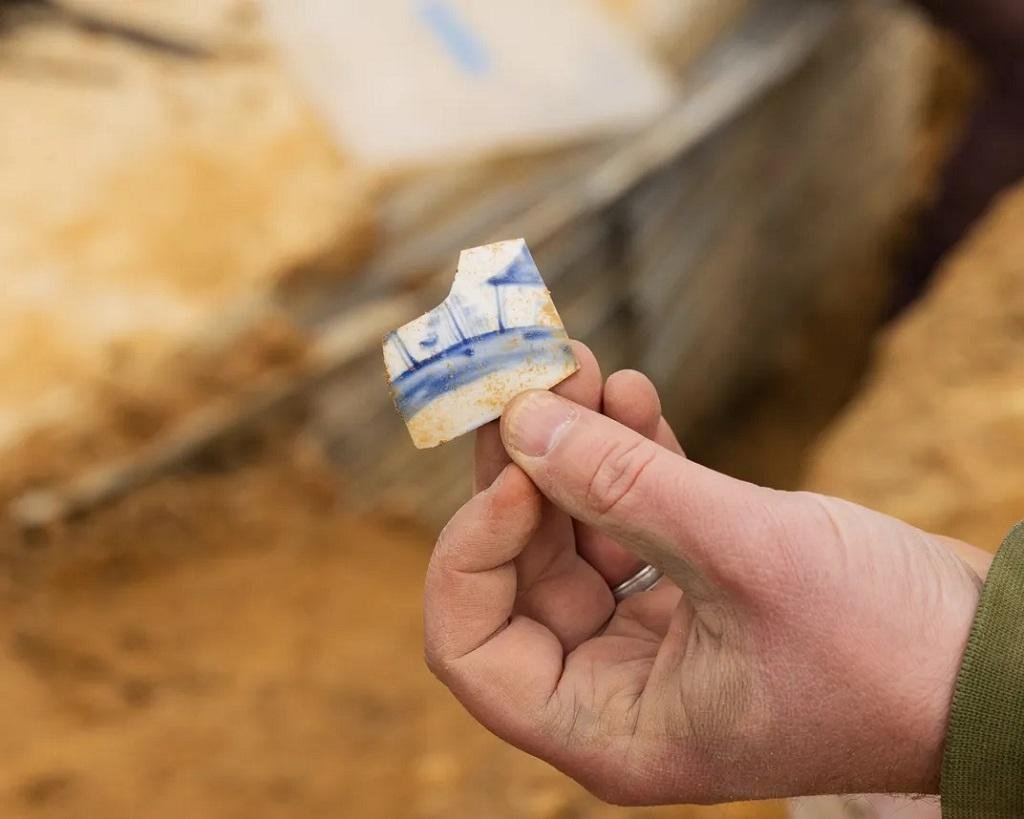During the construction of a new archaeology center in Colonial Williamsburg, Virginia, archaeologists have discovered the remnants of a 17th-century home, believed to have been built around 1660. This finding marks the oldest known colonial structure in the area.
 Part of the 17th-century foundation will be visible through a glᴀss floor section. Credit: Brendan Sostak, The Colonial Williamsburg Foundation
Part of the 17th-century foundation will be visible through a glᴀss floor section. Credit: Brendan Sostak, The Colonial Williamsburg Foundation
The excavation, which began last spring, revealed a 32- by 24-foot brick foundation, including a cellar, and a nearby well. These findings were uncovered beneath a parking lot that had been in place since the 1960s. The house is thought to have stood until the 1720s or 1730s, making it a rare artifact from the period before Williamsburg became the capital of the Virginia colony in 1699. The site was later renamed Williamsburg in honor of William III and served as the colony’s capital until 1780, when it was relocated to Richmond.
Jack Gary, the executive director of archaeology at Colonial Williamsburg, expressed his astonishment at the discovery in a video announcing the find. “It’s just wild for us to have found something like this—and appropriate, too,” he said. “This is an amazing site. The artifacts coming out of it are really significant for us to be able to tell the story of what life was like before Williamsburg was ever even founded in 1699.”
The artifacts uncovered at the site suggest that the home belonged to an affluent family. Among the items found were imported ceramics, diamond-shaped glᴀss window panes, clay wig curlers, and the handle of a silver teaspoon. These materials, according to Gary, are indicative of a wealthy household. “Not everybody had wigs at that time, although we might think that everyone was walking around in them,” Gary noted, highlighting the significance of the clay wig curlers found at the site.
 A ceramic fragment discovered in the building’s cellar. Credit: Brendan Sostak, The Colonial Williamsburg Foundation
A ceramic fragment discovered in the building’s cellar. Credit: Brendan Sostak, The Colonial Williamsburg Foundation
One particularly notable find was a nearly intact fragment of a window, described by Gary as “the largest example recovered archaeologically at Colonial Williamsburg.” Due to its fragility, the team decided to lift the entire block of soil around the window to preserve it. The window is currently undergoing a micro-excavation in a conservation laboratory.
The presence of at least four cowrie shells, small seashells often used as ornaments by enslaved people, suggests that the site may have also been ᴀssociated with slavery. These findings, along with an ᴀssemblage of animal bones from pigs, cows, sheep, and fish, offer a detailed snapsH๏τ of daily life in the household during the late 17th and early 18th centuries.
While the exact idenтιтy of the home’s residents remains unknown, the discovery provides a rare and valuable insight into a specific moment in Williamsburg’s history. Gary explained that the team faces challenges in identifying the occupants due to the loss of property records for this portion of Williamsburg during the Civil War. However, the тιԍнтly dated nature of the house’s destruction allows for a “fantastic snapsH๏τ into everyday life in Williamsburg from a specific time period.”
The excavation is part of the ongoing work at Colonial Williamsburg, a living history museum that spans 301 acres and includes dozens of original 18th-century buildings. The site aims to bring the history of Williamsburg to life through interpreters, actors, and curated exhibitions.
Once the excavation is complete, the new Campbell Archaeology Center will be built on the site. Scheduled to open in 2026, the center will house the world’s largest collection of artifacts from Colonial America, spanning the 17th to 19th centuries. A section of the 17th-century home’s foundation will be visible through a glᴀss floor, allowing visitors to “literally stand on top of history,” as Gary described.
The discovery of this 17th-century home is just one of several recent finds at Colonial Williamsburg. Earlier this year, archaeologists unearthed the remains of a Revolutionary War-era military barracks, and last year, they relocated the oldest surviving schoolhouse for Black children in the United States to its new permanent home in the historic district.





